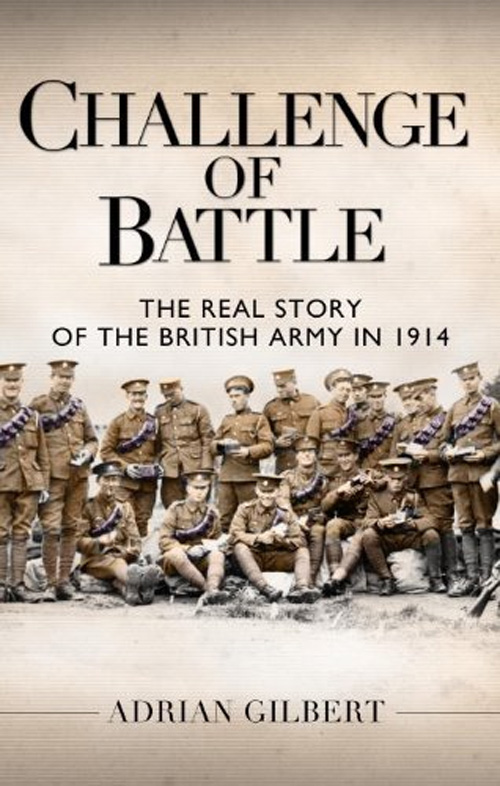Challenge of Battle: The Real Story of the British Army in 1914

Challenge of Battle: The Real Story of the British Army in 1914, Adrian Gilbert, Osprey Publishing, 2014, 304p, £20,
ISBN: 978-1-84908-859-6.
With the approaching centenary of World War I, there are many books already appearing relating to what is still a massive event in British history, eventually involving almost every family in the country. There are many accounts of military events but Adrian Gilbert, who is a distinguished military historian, has contributed a detailed analysis of the performance of the British Army in 1914, covering both strengths and weaknesses. This contribution to the war effort was very important, as it was extremely possible for the small professional British army, famously described as ‘Contemptible' by the German Kaiser, to be wiped out by the numerically larger enemy, as they pushed into north western France, in pursuit of a rapid victory.
Taking only the campaigns of 1914, the author analyses how the British army managed to survive the opening battles in what was generally expected to be a short war, but which turned into a four year war of attrition on the Western Front. Gilbert discusses British tactics at the battles of Mons, Le Cateau, the Marne and Aisne and finally in the crucial defence of Ypres. He explains why the initial advance into Belgium became a long retreat and then a counter attack which forced the Germans back to what eventually became a long line of defensive trenches, which neither side could effectively break. He has also analysed the British structure of command, showing the clashes of personalities between men in charge, like French, Haig and Smith-Dorrien. The command relationships with the politicians back in London were also often difficult.
One thing that became clear by the end of 1914 was that the losses of the British army were such that many more trained troops would be needed, if the war was to be won. By December 1914, ‘the old British army' had been destroyed. Adrian Gilbert's book is well written and supported by his detailed research of letters and documents. There are clear maps and some contemporary photographs to illustrate what is an interesting work, both for military and non-military historians.

